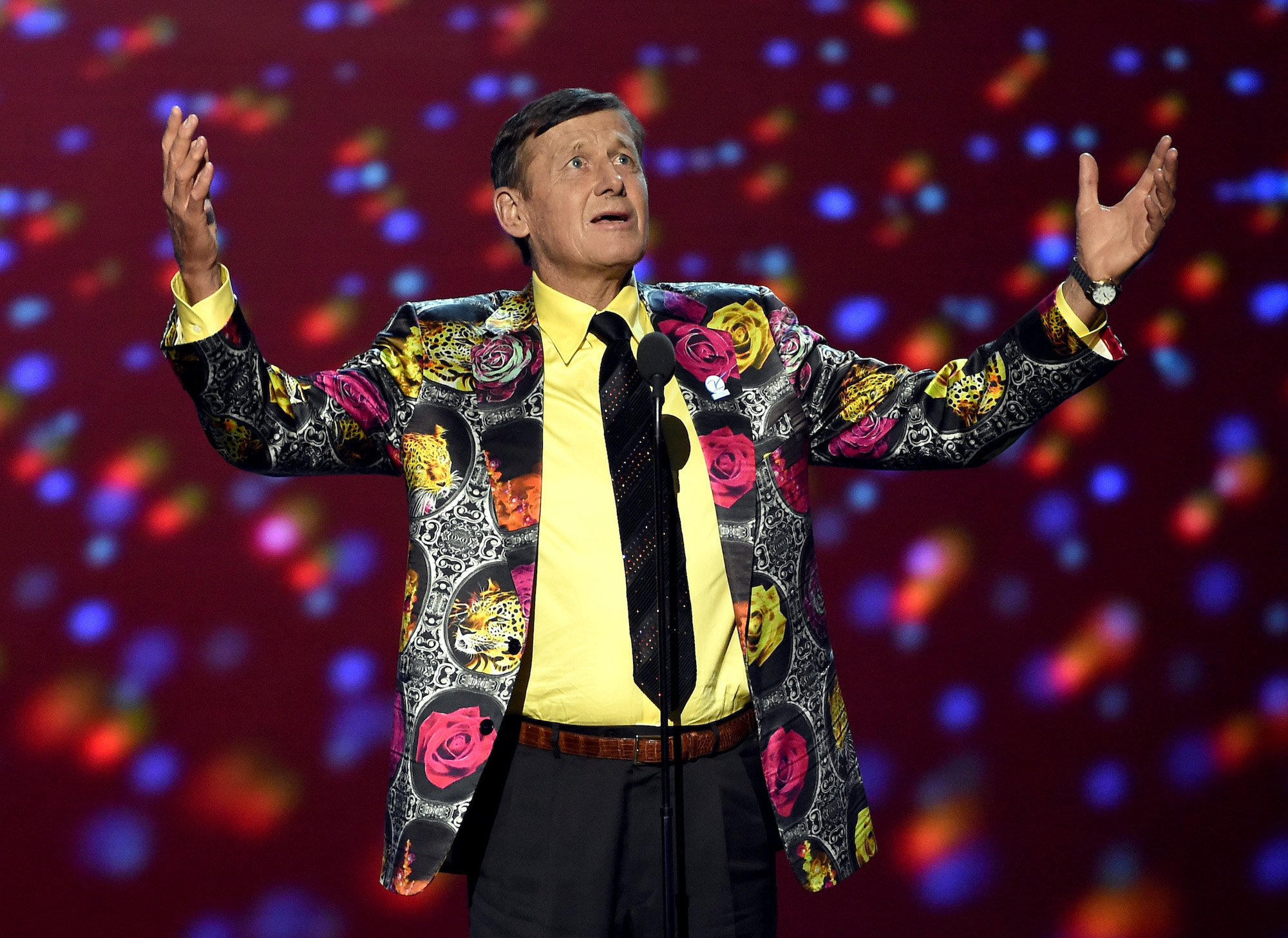NBA
The Tragic Death of Beloved NBA Reporter Craig Sager

While being a sports broadcaster may seem like an easy job, it’s a bit tougher than you’d think. It takes a particular skill set to be able to watch the game and provide insight in real-time; as Booger McFarland demonstrated, not everyone can pull it off. Craig Sager, on the other hand, never had any trouble connecting with NBA fans.
Although Sager plied his trade as a sideline reporter instead of sitting in the broadcast booth, he became a key part of the NBA on TNT experience. That reality made his tragic 2016 death all the more painful.
Craig Sager’s early journalism career
When you hear the name Craig Sager, you probably imagine him wearing a colorful jacket and standing on the NBA sidelines interviewing Gregg Popovich. Just like a player, though, few reporters start out on the big stage.
As documented on his old Turner Sports profile, Sager attended Northwestern University, where he majored in speech and assumed the role of the school mascot. After graduation, he headed to Florida, landed a job as a weatherman, and started working for a local radio station.
From the start, though, Sager had a knack for doing whatever it took to get the story. When Hank Aaron hit his record-breaking home run, Sager was on the field for an interview; during Seattle Slew’s 1977 Triple Crown campaign, Sagar slept in an adjacent stall.
Sager eventually moved to KMBC-TV, where he served as a sports director, anchor, and reporter. One day in 1981, however, he received a call from Ted Turner, asking if he’d be interested in joining CNN.
Becoming an NBA icon
RELATED: Some Charles Barkley Quotes to Enjoy While the NBA is on Break
As documented by CNN.com after his death, Craig Sager accepted Turner’s offer and became CNN employee number 343. That decision would set the stage for his iconic NBA reporting job.
From the start, Sager’s experience allowed him to wear whatever hat the network required. He provided dispatches from the MLB playoffs and anchored sports shows; he covered everything from college football and the NFL to the World Cup and Winter Olympics. The NBA, however, proved to be a natural fit.
Sagar became a sideline reporter for Turners’ NBA broadcasts and quickly proved to be a natural. While his outrageous suit grabbed viewers’ attention, he wasn’t simply a showman there to spice up the game or crack a joke.
Instead, he struck the perfect balance. “Sager didn’t just report on injuries sustained during games and chat with the star player on the winning team after the game,” Shaun Powell wrote on NBA.com. “Sager often asked tough questions of coaches during televised timeouts and ventured into losing locker rooms to interview dejected players for follow-up reports.” At the same time, however, “Sager miraculously made the game more colorful than his army of now-legendary suits and gators, and his smile reminded all of us that while we preach ‘ball is life,’ basketball is, in fact, still a game,” as Justin Tinsley explained for The Undefeated.
Craig Sager’s tragic death shook the NBA to its collective core
During his time with TNT, Craig Sager became a key part of the NBA television experience. His time on the job, however, would end in tragedy.
As documented by an ESPN post from the time, Sager was diagnosed with acute myeloid leukemia shortly before the 2014 NBA playoffs began; he would miss the entire postseason. While he returned to the court during the following campaign, the cancer eventually returned. Despite receiving a third bone marrow transplant, Sager died in December 2016.
Tributes poured in, with everyone from Barack Obama to LeBron James remembering the iconic reporter. Perhaps the best memorial, however, came from Sager’s courtside “rival,” Gregg Popovich.
“To talk about him being a professional or good at what he did is a tremendous understatement,” the Spurs coach explained, according to CBS Sports. “All of us who knew him understood that fact, what he was all about as far as work was concerned, but he was a way better person than he was a worker, even though he was amazing in that regard. He loved people, he enjoyed pregame, during games, postgame – he loved all the people around it, and everybody felt that.”
“The most amazing part of him is his courage,” Popovich continued. “What he’s endured, and the fight that he’s put up, the courage that he’s displayed during this situation is beyond my comprehension. And if any of us can display half the courage he has to stay on this planet, to live every (day) as if it’s his last, we’d be well off. We all miss him very much.”











